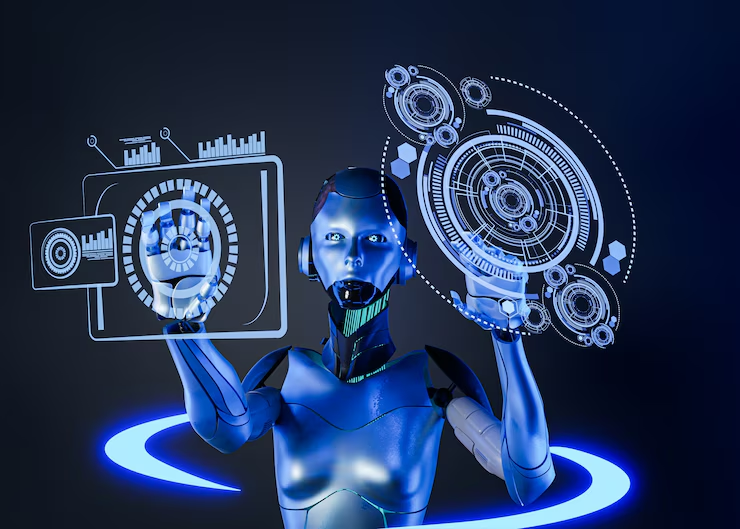Digital Transformation in Manufacturing – The Four Stages of Industry 4.0 Adoption. Last month, I walked through a factory that had been operating since the 1970s. The contrast was striking ancient hydraulic presses stood next to collaborative robots, legacy control systems operated alongside AI-powered quality inspection cameras. The plant manager pointed to a machine where operators were scanning QR codes to pull up digital work instructions on tablets. “Five years ago, everything was on laminated paper,” he told me. “We’re somewhere between stages one and two of our digital transformation.”
This hybrid reality is common across manufacturing. Industry 4.0 isn’t something you implement overnight it’s a journey that unfolds in distinct stages, each building on the capabilities of the previous one. Having guided dozens of manufacturers through this evolution, I’ve observed how these stages consistently manifest.
Stage 1: Digitization of Operations (Connected Devices & Systems)
Think of this as manufacturing’s “digital awakening” connecting previously isolated machines and processes to generate data.
At a precision metals client, we began by simply adding IoT sensors to 30-year-old CNC machines. The retrofitted equipment suddenly gained digital voices, streaming operational data that revealed utilization was only 43% against the perceived 70%. This visibility alone improved productivity by 22% within three months.
The technical architecture at this stage typically includes:
- Edge devices using industrial protocols (Modbus, OPC-UA, MQTT) to extract machine data
- Gateway infrastructure for protocol translation and initial data processing
- Basic cloud infrastructure for data consolidation with simple dashboards
- Nascent MES capabilities focused primarily on production tracking
Technical reality check: Most manufacturers struggle with network infrastructure at this stage. When we installed 200+ sensors at an automotive supplier, their legacy network collapsed under the new data load. Start with network assessment before adding connected devices.
Stage 2: Data-Driven Insights (Automation & Analytics)
Once data flows reliably, the focus shifts to extracting intelligence from that data.
An aerospace components manufacturer I worked with implemented predictive quality analytics on their most problematic production line. By analyzing correlations between 40+ process parameters and final quality measurements, we developed models that could predict defects before they occurred. Scrap rates dropped from 12% to 3.5% in the first quarter of implementation.
The technical evolution in this stage includes:
- Data lakes/warehouses that combine production, quality, and business data
- Statistical process control (SPC) enhanced with machine learning
- Digital twins simulating production processes with increasing fidelity
- Basic closed-loop systems where analytics trigger automated actions
Technical reality check: Data silos remain the biggest challenge here. One client had valuable data trapped in seven different systems that couldn’t communicate. We implemented a middleware layer using Apache Kafka to create a unified data stream that analytic applications could consume.
Stage 3: Integrated Ecosystems (Interoperability & Supply Chain Connectivity)
This stage extends digital connections beyond factory walls, creating synchronized ecosystems.
A consumer-packaged goods manufacturer I advised implemented an integrated planning system that connected demand signals directly to their production scheduling and supplier ordering systems. When retail sales data showed unexpected demand patterns, production schedules automatically adjusted, and material orders updated accordingly. Lead times decreased by 36% while inventory carrying costs dropped 22%.
The technical foundation expands to include:
- API-first architectures enabling system-to-system communication
- Real-time data synchronization with suppliers and customers
- Edge computing nodes making autonomous decisions based on local and cloud data
- Supply chain visibility platforms with blockchain components for verification
Technical reality check: Security becomes paramount at this stage. As systems open to external connections, cybersecurity vulnerabilities multiply. One client delayed their supplier portal launch by three months to address critical security gaps identified during penetration testing.
Stage 4: Autonomous Manufacturing (AI-Driven & Self-Optimizing Systems)
The culmination is manufacturing environments that self-optimize with minimal human intervention.
One electronics manufacturer’s “lights-out” assembly line uses computer vision and reinforcement learning to continuously optimize placement accuracy and speed. The system self-adjusts based on component characteristics and environmental factors, achieving a 99.9998% first pass yield beyond human capability.
Technical capabilities at this stage include:
- Complex AI systems making real-time operational decisions
- Autonomous mobile robots coordinating through shared intelligence
- Self-healing systems that detect and resolve anomalies
- Continuous learning algorithms that improve processes without explicit programming
Technical reality check: Full autonomy remains rare. Even advanced manufacturers typically implement it in isolated processes rather than facility-wide. Human-machine collaboration is still the practical reality.
Conclusion
The journey through these four stages isn’t linear or uniform. Most manufacturers operate with different maturity levels across different areas. The key is recognizing where you stand today and building a roadmap that progressively enhances capabilities.
Digital transformation in manufacturing isn’t just about technology it’s about reimagining how products are designed, produced, and delivered. The most successful transformations focus equally on technology, process change, and, most importantly, the people who make it all work.

